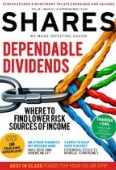Archived article
Please note that tax, investment, pension and ISA rules can change and the information and any views contained in this article may now be inaccurate.
Understanding premiums and discounts to NAV

Many investors are unnerved by investment trust discounts and premiums and it’s all too easy to be confused. Yet the concepts are quite simple and they shouldn’t put you off these investment vehicles. Understanding the difference between discounts and premiums is important. If you do not it can cost you money.
The total sum of an investment trust’s holdings, minus any liabilities, is known as its net asset value (NAV).
Shares in an investment trust are traded independently on the stock market and the price of those shares is based on what investors think the investment trust is worth, rather than the estimated value of the assets it holds. So the trust can be undervalued (trades at a discount) or overvalued (trades at a premium) compared to its NAV.
There is one very simple reason why investment trusts have typically traded at discount to NAV – the liquidation cost. This is the implied expense a trust would incur if it was to wind itself up, sell off its assets, and return the cash proceeds to shareholders.
Seemingly simple, but often complex
Investing in investment trusts at a discount is often billed as a good opportunity for investors, but it’s not quite that simple. There may be other factors at play, such liquidity and/or market sentiment.
When investors get spooked for whatever reason, since investment trusts can be less liquid (the shares are more difficult to trade) than the underlying holdings of the trusts, the trust’s share price can fall faster than the share prices of its underlying assets, and ergo its NAV, widening the discount.
Or perhaps it might reflect a lack of faith in the management of the trust. They might come to the conclusion that bad management is going to reduce the investment trust’s NAV such as through poor asset allocation and stock selection.
Theoretically, large discounts could be arbitraged away by the market over time, yet all too often they can persist for years. Alliance Trust (ATST), for instance, is a huge £3bn-plus trust that has long traded at a discount to NAV, currently 10.8%. That is despite being held in relatively high regard by many investment experts. Over the years arbitragers have even looked at releasing the extra value by buying the entire trust and closing it down but there has been no concrete move in this direction yet.
(Click on table to enlarge)
This is relevant information because so many UK-quoted investment trusts are currently trading at discounts. More than three quarters, according to data from Trustnet, or 225 of the 295 investment trusts trading on the London Stock Exchange can be bought for less than their net asset value. Nearly half (46%) of them are currently on discounts of 10% or more; and 21 (7%) are on discounts in excess of 30%.
Nick Greenwood, manager of the Miton Global Opportunities Fund (MIGO) believes there is something more structural going on that helps explain why so many investment trusts are discounted. ‘Going back not too many years, the old-fashioned private brokers were the main users of investment trusts,’ he explained in an interview with Morningstar earlier in 2016. ‘That whole industry has been consolidated into five or six major wealth manager organisations/chains who wanted to standardise portfolios because of the sheer bulk of the money that they were managing.’
Importantly, with so much capital in the hands of a small number of wealth managers, it becomes increasingly difficult to buy stakes in many investment trusts right across a vast number of clients, so the wealth managers look to alternative vehicles.
Greenwood estimates that maybe 80% of traditional investment trust buyers have disappeared this way, which helps explain why discounts in the mid-20s are not untypical for smaller and medium-sized trusts these days.
(Click on table to enlarge)
Premium pricing
As you might expect, the reasons for the rarer situation of a trust trading on a premium are the reverse of the discounted trust. Investors might be particularly bullish and have bid up the price of relatively illiquid trusts in the frenzy, for example.
Premiums could even be down to strong faith in management to make good stock selection and asset allocation decisions in future, or even be a perception that a trust is investing in a particular hotspot.
For example, the technology space has largely enjoyed a good 2016 right across the globe.
When the Allianz Technology Trust (ATT) posted full year to 30 November 2015 results on 26 February 2016 it had a year end NAV of 675.1p. That compared to a 632p share price on 30 November 2015 (a 6.5% discount) or 576p on the day the figures were released (14.7% discount).
Based on its most recent NAV of 844.3p, according to Morningstar data, the shares at 797p trade at a 5.6% discount.
While investing in investment trusts trading at a premium may seem counter-intuitive to the old adage of buy low, sell high, implementing this rule of thumb wholesale would rule out many excellent trusts with hard-earned and deserved copper-bottomed reputations. (SF)
Important information:
These articles are provided by Shares magazine which is published by AJ Bell Media, a part of AJ Bell. Shares is not written by AJ Bell.
Shares is provided for your general information and use and is not a personal recommendation to invest. It is not intended to be relied upon by you in making or not making any investment decisions. The investments referred to in these articles will not be suitable for all investors. If in doubt please seek appropriate independent financial advice.
Investors acting on the information in these articles do so at their own risk and AJ Bell Media and its staff do not accept liability for losses suffered by investors as a result of their investment decisions.

 magazine
magazine










